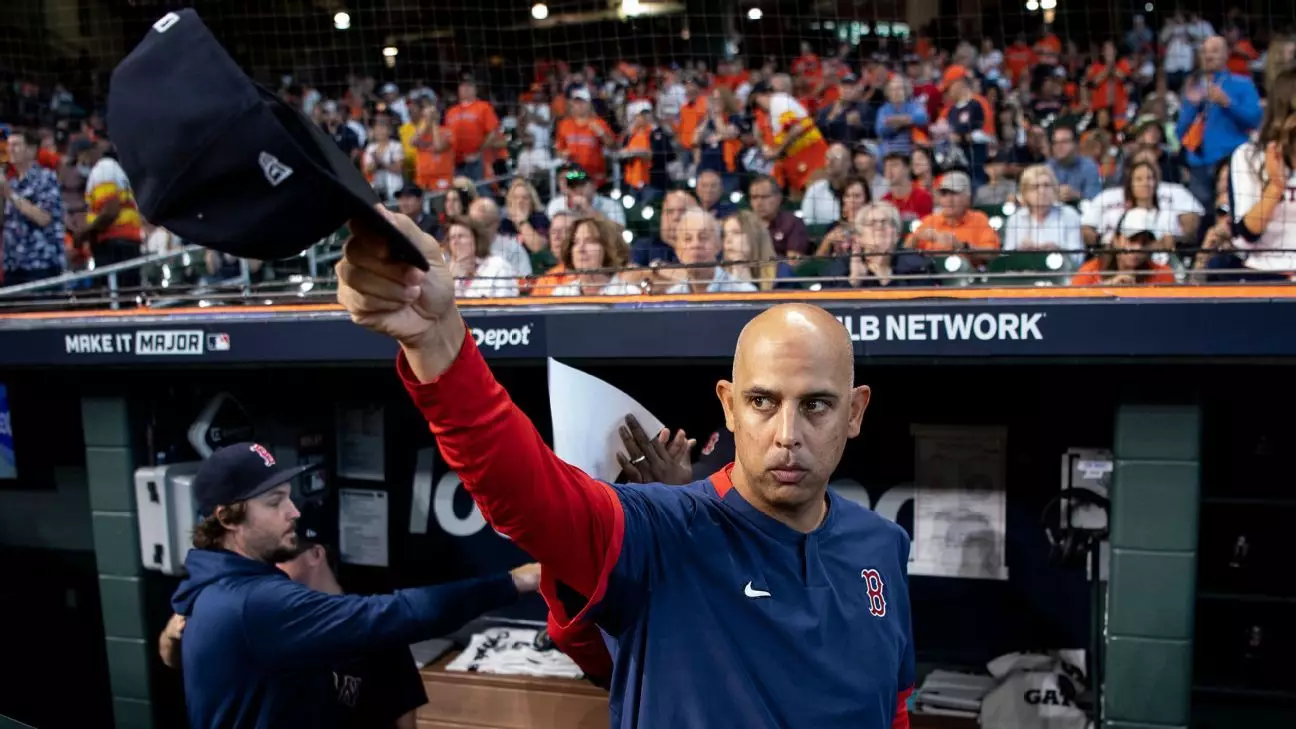Boston Red Sox manager Alex Cora recently voiced a truth that resonates deeply within the sporting world: the demands placed on athletes today are staggering, whether in baseball or soccer. With a newfound admiration cultivated during his visit to Anfield for a match between Liverpool and Manchester City in 2019, Cora has gained insights into the sheer enormity of the soccer calendar. His observations, stemming not just from an outsider’s perspective but from deep discussions with players like Liverpool’s Virgil van Dijk, shed light on the phenomenon of fixture congestion—a challenge that transcends the barriers of sport.
Cora remarked on the chaotic nature of the soccer season, where even a fourth-place finish can lead to euphoric celebrations due to qualification for the Champions League. In baseball, a game’s significance can sometimes feel diluted, given the 162-game schedule that spans nearly six months. The concept of “meaningful matches” seems to shift dramatically between the two sports, with soccer presenting constant skirmishes for trophies while baseball players grapple with more entrenched cycles of gameplay.
The Impact of Fixture Fatigue
As the upcoming 2024-2025 soccer season shapes up to be an unprecedented marathon—highlighted by FIFA’s decision to host the Club World Cup in the U.S.—the conversation around fixture fatigue has become alarmingly pertinent. Players like Erling Haaland and Kylian Mbappé have publicly expressed their concerns about the strain of non-stop schedules, alerting us to the dangers posed by unrelenting competition. Drawing parallels, Cora emphasized how both athletics face relentless demands that could culminate in serious injuries. This past year, several elite clubs, including Arsenal and Real Madrid, suffered from a spate of injuries attributed to fatigue—a glaring reminder of the need for a more balanced approach to games.
Hansi Flick, Barcelona’s manager, voiced objections against the relentless schedule imposed on players, calling for regulatory bodies like UEFA and FIFA to implement recovery periods post-international breaks. Flick’s frustrations echo a wider dilemma facing professional athletes: the overwhelming challenge of balancing competitive integrity with player wellness.
Understanding the Grind: Players and Recovery
During his conversations with Van Dijk, Cora underscored the differences—and similarities—between the soccer and baseball seasons. While soccer players face tournament pressures across a longer span within a year, the grueling work ethic and the mental toll remain central themes shared by both sports. The collapse of recovery times leads to heightened risks of injuries, necessitating a profound examination of athlete workload around the globe.
The 2023-2024 season saw a rising concern among soccer management, sparked by the increased incidence of injuries that had profound ramifications on team performance. The current model, juxtaposed with international duties and club commitments, often places players under an inordinate amount of pressure.
Commercial Interests vs. Athlete Welfare
FIFA’s recent statements on calendar congestion further illuminate the stark realities confronting athletes. The organization’s critique of European leagues operating with “commercial self-interest” hints at the often-litigious dance between the integrity of the sport and profit margins. This friction begs the question: Is the globalization of sport becoming counterproductive to player health?
As clubs chase financial incentives through expansive tours and fixture-laden schedules, the true cost is growing—one that includes player burnout and elevated injury risks. As Cora humorously noted in his conversation with Bennett, it seems that there is an insatiable appetite to push athletes to their limits, as if a grueling 162-game season is merely a warm-up act.
The Need for Reform in the Football Calendar
The upcoming summer, marked by the Club World Cup—an expansive tournament featuring 32 teams—adds another layer to the dilemma. Scheduled just days after the Champions League finals, the compact timeline exacerbates the stakes, making the risk of player exhaustion even more palpable. With significant international games looming on the horizon, from World Cup qualifiers to UEFA tournaments, the spotlight on athlete wellness becomes brighter than ever.
Cora’s insights call for collective action—an urgent shift that prioritizes player welfare over sheer profits. The upcoming season, rife with overcapacity, challenges athletes the world over, pushing the limits of endurance—a narrative reflecting a broader crisis that must be confronted. The time is ripe for a revolution in scheduling formats, where player health dictates the standards we set for our beloved sports.

